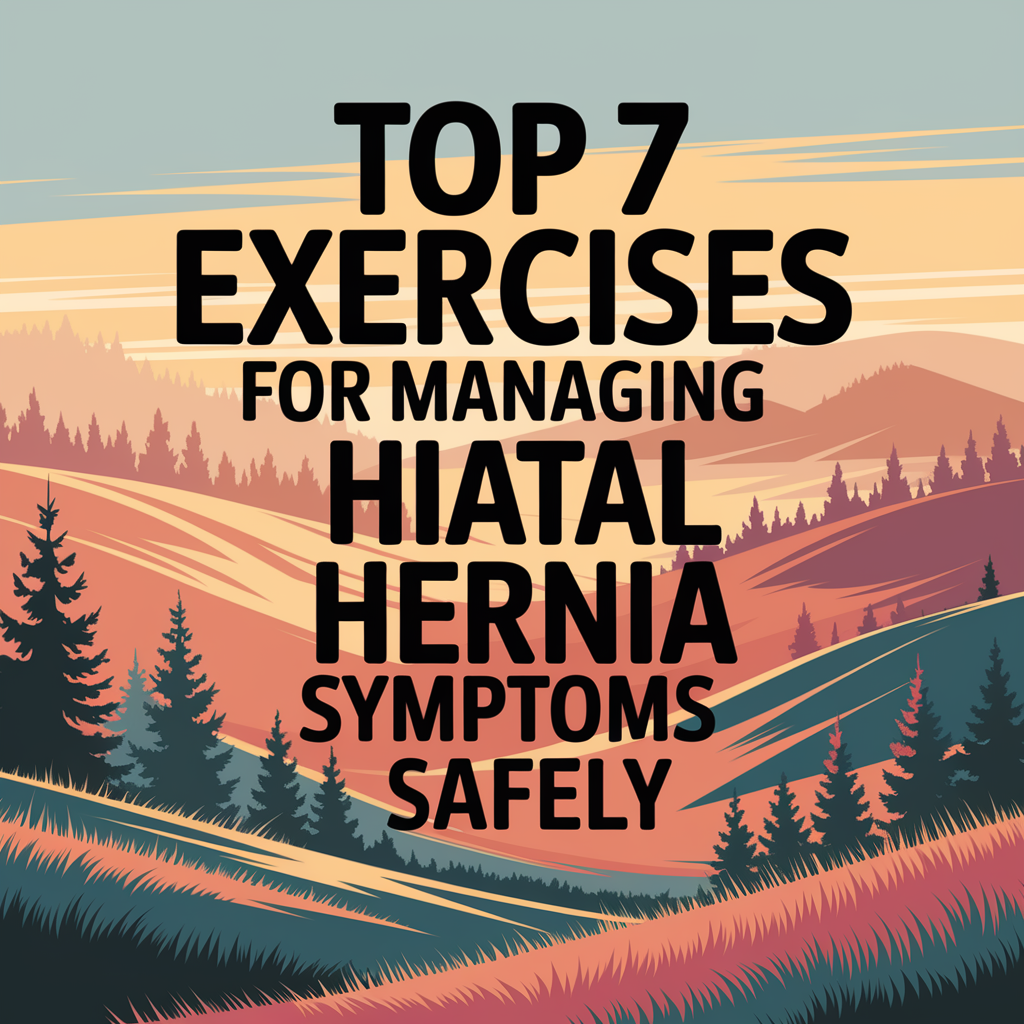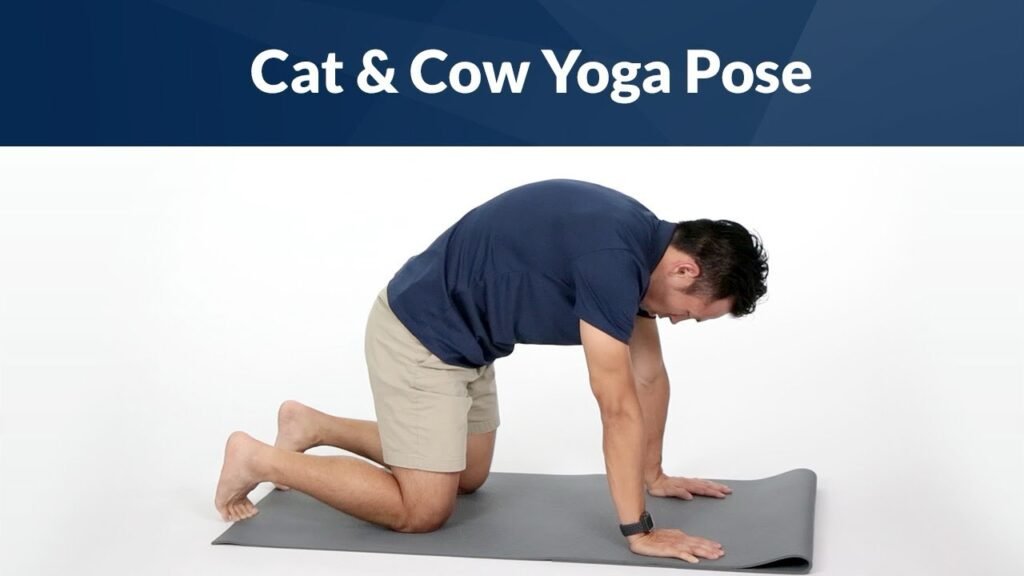
Embracing movement with a hiatal hernia
When I was first diagnosed with a hiatal hernia, I was afraid to move. I thought if I twisted the wrong way or lifted something too heavy, I’d make things worse. I even stopped going for walks because I wasn’t sure what was “safe.” It felt like my own body was working against me, and I didn’t want to do anything to aggravate it further.
But after some research and trial and error (and let’s be real, a few flare-ups), I realized that movement isn’t the enemy—the right kind of movement can actually help. The key is choosing exercises that reduce pressure on your abdomen and support your core and diaphragm without causing strain.
This guide is everything I wish I had when I started figuring it out—safe, effective hiatal hernia exercises that can help reduce symptoms, support digestion, and even improve your energy without making things worse.

How exercise helps manage a hiatal hernia
You might be wondering how something like walking or stretching could possibly affect a condition like a hernia. I used to wonder that too. But when you’re dealing with a hiatal hernia, the muscles in and around your diaphragm play a huge role in how well your body handles digestion and pressure inside your abdomen.
Here’s how gentle exercise helped me manage my symptoms:
1. It improved digestion
Low-impact movement like walking after meals helped my food settle and reduced reflux. It made me feel less “stuck” and bloated.
2. It strengthened my diaphragm
One of the simplest but most powerful things I started doing was diaphragmatic breathing. Strengthening this muscle helped reduce the upward push of my stomach and eased pressure around the hernia opening.
3. It helped manage weight and stress
Extra weight around the middle is a known risk factor for worsening hernias. Gentle exercise helped me maintain a healthier weight—and clear my head, which honestly helped more than I expected. (If you haven’t read this yet, here’s how gut health and mental clarity are connected.)
If you’ve been scared to move or unsure where to start, the rest of this article will walk you through safe, practical exercises that worked for me—and might just help you feel better, too.
Safe exercises that helped me feel better (without flare-ups)
Once I learned what to avoid, I started focusing on hiatal hernia exercises that supported my body gently. No crunches, no jumping, no straining—just movement that made me feel better, not worse. These are the exercises that helped me reduce pressure, ease digestion, and build strength without triggering my symptoms.
1. Walking (my go-to daily habit)
A simple 20- to 30-minute walk after meals helped my food settle and drastically cut down on reflux. It also gave me energy without the post-workout bloat or chest discomfort I used to feel from more intense workouts.
2. Diaphragmatic breathing (a total game-changer)
This one surprised me with how powerful it is. I’d lie on my back or sit in a chair, put one hand on my belly and the other on my chest, and breathe in through my nose—only moving my belly, not my chest. Just 5–10 minutes a day helped strengthen my diaphragm and reduced the feeling of pressure in my upper stomach.
This technique also helped when I felt that annoying gurgling in my gut at bedtime. You can learn more about why that happens in this article about bedtime stomach gurgling.
3. Gentle yoga (modified and focused on posture)
I avoided any inversions or deep twists and stuck to calming poses like:
- Cat-cow stretch
- Child’s pose
- Bridge pose (supported)
- Legs-up-the-wall (but only for short periods)
Yoga helped release tension in my core and ease bloating without straining my abs.
4. Swimming or water walking
When available, water-based workouts were ideal. They let me move freely without compressing my midsection, and I didn’t feel wiped out or inflamed afterward.
These exercises became my safe space—something I could rely on even on bad days. Up next, I’ll break down which exercises to absolutely avoid, because there were a few that made my symptoms skyrocket when I didn’t know better.

Exercises to avoid with a hiatal hernia (I learned the hard way)
Not all movement is helpful when you have a hiatal hernia—in fact, some exercises can make your symptoms way worse. I had to learn this the uncomfortable way after a few core workouts left me bloated, burning, and regretting every rep.
If you’re managing a hernia, here are the exercises I now avoid completely (or modify heavily):
1. Crunches, sit-ups, and planks
Any movement that forces your abdominal muscles to contract strongly can push your stomach upward—and with a hernia, that’s the last thing you want. I noticed almost immediate pressure and discomfort after just a few crunches, even when I tried to “go easy.”
2. Heavy lifting or straining
This includes weightlifting moves like deadlifts, barbell squats, and even lifting heavy groceries. If I had to strain or hold my breath to complete the move, it was a clear sign it was too much.
3. Running or jumping exercises
High-impact cardio created way too much bouncing and jostling, which flared up my symptoms—especially the burning in my chest. I now stick to low-impact workouts like walking, swimming, or gentle cycling.
4. Yoga inversions
As much as I love yoga, I had to skip poses like shoulder stands, headstands, or anything that turned me upside down. They increased reflux and gave me that uncomfortable, breathless pressure in my upper chest.
The takeaway? If it feels like it’s putting direct strain on your midsection, it’s probably not worth it. There are safer ways to stay active—without aggravating your hernia.

Creating a gentle, balanced routine that supports healing
It took me a while to find the right rhythm, but once I did, I felt more in control—and less anxious about moving my body. Your hiatal hernia exercises don’t have to be intense to be effective. Consistency matters more than intensity when it comes to reducing pressure, supporting digestion, and feeling stronger over time.
Here’s what a weekly routine looks like for me now:
Daily:
- Light walk after breakfast or dinner (even 15 minutes helps)
- A few rounds of diaphragmatic breathing in the morning and before bed
3–4 times a week:
- Gentle yoga sessions focusing on posture and breath
- Swimming laps or water walking when I have pool access
Weekly focus:
- No heavy lifting
- No workouts that leave me breathless or straining
- Plenty of hydration and fiber to keep digestion moving (I still use Benefiber + Supergreens and a stool softener when needed)
And on those days when my symptoms act up despite everything, I fall back on my basic lifestyle strategies for gut health. They help me reset without getting discouraged.
A gentle routine doesn’t just support your hernia—it supports your whole well-being. And once I started moving with my body (not against it), I finally felt like I was on the right path.

Complementing exercise with smart lifestyle habits
What finally helped me feel like I was making real progress with my hiatal hernia symptoms wasn’t just movement—it was pairing the right exercises with simple daily habits that supported my gut and reduced pressure from the inside out.
When I kept these habits consistent, my flare-ups became way less frequent, and my body just felt calmer overall.
1. Eating smaller, more frequent meals
Large meals put too much pressure on the diaphragm, especially if I sat down right after. I now eat 4–5 smaller meals a day and keep dinner light. I explain more about how this helps in my hiatal hernia diet article.
2. Not lying down after meals
Even 15–30 minutes of light walking after eating made a noticeable difference. It helped reduce reflux and gave my digestion a chance to do its job without gravity working against me.
3. Using fiber and supplements wisely
I can’t stress enough how much regular digestion helps. When I wasn’t going regularly, I felt bloated and my chest felt tight. A daily dose of Benefiber Prebiotic Fiber + Supergreens keeps things moving, and I keep Milk of Magnesia on hand for those tougher days.
4. Sleeping with my head elevated
This one was a game changer. I started by stacking pillows, but eventually invested in a wedge pillow. It helped prevent stomach acid from creeping up overnight—and made mornings way easier.
5. Managing stress and breathing deeply
Stress tightens everything—including your gut and diaphragm. I use diaphragmatic breathing not just as an exercise, but also when I feel overwhelmed. It grounds me and eases that uncomfortable chest pressure.
These lifestyle habits work with the safe exercises I shared earlier. On their own, they’re powerful—but together, they’re how I took back control of my body and stopped letting the hernia run my life.

Listening to your body and knowing when to rest
One of the most underrated things I learned while managing my hiatal hernia was how to slow down and actually listen to what my body was trying to tell me. For the longest time, I pushed through discomfort thinking, “It’s just a little reflux” or “Maybe I just ate too fast.” But once I started tuning in, I could catch flare-ups before they hit hard—and even prevent them altogether.
Here’s what I pay attention to now:
- Tightness or pressure in my chest = I skip anything that engages my core that day
- Increased bloating or indigestion = I back off from stretching too deeply or doing yoga poses that compress the belly
- Fatigue or sleep disruption = I focus on breathwork and light movement instead of a full workout
If I’m feeling off, I don’t push. That was a hard lesson to learn, but now it helps me bounce back faster and avoid turning a small issue into days of discomfort.
A good day of movement doesn’t mean crushing it at the gym—it means feeling better afterward, not worse.

Keep moving—but move smarter
When I first started researching hiatal hernia exercises, I expected a long list of restrictions. What I didn’t expect was that movement would become one of my greatest tools for managing symptoms. With the right exercises, I felt lighter, more energetic, and way less bloated—even on my worst days.
My go-to routine includes:
- Daily walking to support digestion
- Simple diaphragmatic breathing to strengthen the core without strain
- Low-impact yoga stretches to relieve pressure
- Saying no to high-impact, ab-heavy, or breath-holding moves
Pair that with fiber-rich meals, daily gut-friendly supplements, and small lifestyle changes, and I finally felt like my body was working with me—not against me.
If you’re dealing with a hernia and afraid to move, I get it. But with gentle, intentional movement, you can feel better—one step (or breath) at a time.
As an Amazon Associate we earn from qualifying purchases through some links in our articles.



